Westmorland
Explore hidden histories, historic photos, and things you never knew about Westmorland from the collections and archives of Historic England.
Discover your local listed buildings and places
Introducing some of Westmorland's most historic sites, included in the National Heritage List for England. Some of these captions have been summarised by AI. Click through for the official List entry. Skip this section and go to place by numbers
Mireside Farmhouse and bank barn
Crosthwaite and Lyth
Farmhouse, late C17 with C18 alterations, and bank barn of later C18 or early-C19 date.
Low Borrowbridge Roman fort
Grayrigg
The Low Borrowbridge Roman fort and settlement are well-preserved, offering insights into military and civilian life during Roman Britain, with significant archaeological deposits revealed...
Dallam Tower
Beetham
Dallam Tower, a Grade I listed building, features early 18th-century origins with landscaped gardens and a deer park, reflecting historical development since the medieval period.
Levens Hall
Levens
Levens Hall's park and gardens, designed by Guillaume Beaumont from 1689 to 1712, retain their original layout, showcasing historical and cultural significance over architectural details.
Two rifle ranges on Silver How
Lakes
The remains of two mid-C19 military rifle ranges (300 yards and 800 yards) oriented north-west to south-east, situated above Grasmere on the lower slopes of Silver How adjacent to the public...
Sizergh Castle
Helsington
Sizergh Castle, a former pele tower dating back to the 14th century, features historical gardens developed by T Hayes & Son in 1926. Owned by the National Trust since 1950.
The Langdale Boulders, two prehistoric rock art sites in …
Lakes
The Langdale Boulders, located in Great Langdale, are notable prehistoric rock art sites.
County Offices
Kendal
Council offices 1937-9 to the designs of Verner O. Rees for Westmorland County Council.
Brough Castle and Brough (Verteris) Roman fort and civil …
Brough
The upstanding and buried remains of Brough (Verteris) Roman fort and its associated civilian settlement, Brough medieval castle and a forework and a series of linear earthorks associated...
Roman milestone near Middleton vicarage
Middleton
The Roman milestone near Abba Farm is a well-preserved example, highlighting the historical importance of Roman roads in England, both militarily and economically.
Lowther Castle
Askham
Lowther Castle, designed by Robert Smirke in the early 19th century, was the seat of the Lowther family since the 12th century, now maintained as a controlled ruin.
The Cockpit stone circle and seven adjacent clearance cai…
Barton and Pooley Bridge
The Cockpit is a significant prehistoric stone circle on Moor Divock, with adjacent clearance cairns, illustrating its historical and ritual importance in prehistoric Cumbria.
Beckside farmhouse and barns
Crook
Farmhouse, later C17 with mid-late C19 addition; bank barn and threshing barn, late C18 or early C19.
Brougham Roman fort (Brocavum) and civil settlement and B…
Brougham
The upstanding and buried remains of Brougham Roman fort (Brocavum) and its associated civil settlement and Brougham medieval castle.
Kendal Castle and associated earthworks, and earlier ring…
Kendal
Kendal Castle, a significant medieval fortification, developed from a late 12th-century ringwork. Linked to Katherine Parr and notable for its historical and educational value.
Storrs Hall
Windermere
Simple classical villa, mid 1790s, for Sir John Legard, transformed c1808-9 by Joseph Gandy for John Bolton. The clerk of works was Francis Webster.
Watercrook Roman fort and civil settlement
Natland
The Roman fort and civilian settlement near Watercrook Farm offers insights into Roman military occupation with its well-preserved archaeological remains, showcasing long-term habitation and...
Former White Hart And Stable To The Rear, 34 Boroughgate
Appleby-in-Westmorland
Inn, mid-C18 with possible earlier origins and a mid-C18 stable/coach house; C19 and C20 additions and alterations.
Rydal Mount
Lakes
Rydal Mount, designed by poet William Wordsworth, blends Picturesque ideals with historical continuity. Featuring terraced gardens and scenic views, it reflects 19th-century artistic tastes.
Rydal Hall
Lakes
Sir Daniel Fleming built a grotto in 1669 for viewing a waterfall, enhancing Rydal Hall's aesthetics. The Hall's gardens, designed by Thomas Mawson, date back to circa 1909.
Ambleside Roman fort, associated vicus and Roman road
Lakes
Ambleside Roman fort and its vicus are significant for their rare insights into Roman military strategy.
Eastward Farmhouse and attached Barns
Bampton
Farmhouse, probably late C17, extended in the C18, with minor C20 adaptations; two attached combination barns, probably C18 or early C19, with later additions.
The White House
Appleby-in-Westmorland
House, early C18, re-modelled 1754 and 1764-1765 for John Robinson, extended late C18. The latter design attributed to Henry Ballas (or Bellhouse) of Appleby.
Belle Isle
Windermere and Bowness
Belle Isle on Lake Windermere features a Grade I listed cylindrical mansion designed by John Plaw in 1774, noted for its picturesque setting and historical tourism significance.
Appleby Castle
Appleby-in-Westmorland
Appleby Castle, dating back to the 11th century, was developed by Lady Anne Clifford in the 17th century. It is now a museum, offices, and private dwellings.
St Anne's Hospital
Appleby-in-Westmorland
Almshouse, including a chapel and former communal hall, founded 1651-1653 by Lady Anne Clifford.
Castle Howe motte and bailey
Kendal
Castle Howe is a late 11th-century motte and bailey in Kendal, key for controlling river valley movement and demonstrating post-Conquest feudal order in northwest England.
Blackwell
Windermere and Bowness
Blackwell, designed by Baillie Scott in Vernacular Revival style, features Mawson's formal gardens showcasing scenic views of Lake Windermere, historical significance, and arts and crafts...
Maiden Castle near Brough
Stainmore
Maiden Castle Roman Fortlet is a nationally rare and well-preserved example of Roman military strategy, providing insights into the relationship between Roman fortifications and native...
New Sedgwick gunpowder works, 580m north of Gate House
Helsington
The New Sedgwick gunpowder works, notable for 19th-century operations, showcases remains like incorporating mills and retains significant technological features despite partial site...
Hardendale medieval dispersed settlement and site of medi…
Shap Rural
The Hardendale site is a medieval dispersed settlement, evolved from a monastic grange, providing insights into medieval rural life and economy, despite later developments overlaying parts...
Greenside lead mines, ore works and smelt mill
Patterdale
Greenside lead mine exemplifies significant technological advancements in lead mining over 300 years, featuring diverse historical mining structures and innovative uses of technology for...
Moot Hall
Appleby-in-Westmorland
Moot Hall, late C16, with C18 and early-C19 alterations; north range rebuilt in the early C19, altered C20.
The Red House
Appleby-in-Westmorland
House and Judges' lodging, 1717 for Thomas Carleton; late-C20 modifications. Classical style.
Undermount
Lakes
A vernacular house of one and two storeys of early C19 date with earlier origins, architect unknown.
Castle Howe motte and bailey castle
Tebay
Castle Howe is a medieval motte and bailey castle, significant for studying Norman Britain and the feudal system, despite damage from river erosion.
Appleby Castle, uninhabited portions
Appleby-in-Westmorland
Appleby Castle is a well-preserved medieval tower keep castle, notable for its defensive features and historical significance. Its keep, Caesar’s Tower, dates back to 1170.
Brockhole
Lakes
Brockhole features gardens designed by Thomas Mawson and a house by Dan Gibson, blending park and woodland along Lake Windermere, contributing to its historic significance.
Explore more
Search for more listed placesWestmorland through time
This timeline shows the first period of use for buildings and places on the National Heritage List for England, just one of the details recorded for every list entry. Click around to see how Westmorland changes over time. Skip this section and go to aerial photos
Prehistoric Before AD 43
Prehistory covers a million years of human occupation before the Roman invasion, from hunter-gatherers of several human species, including Neanderthals, to more recent herders and farmers. It was a time of developing technologies and belief systems, involving contact with and migration from Europe, all reflected in the variety of artefact and monument types characteristic of particular prehistoric periods.
Roman AD 43 to AD 410
Britain was invaded by four legions of the Roman army in AD 43, who relatively rapidly conquered England from landing points in Kent. Parts of Wales and Scotland soon followed.
Roman culture brought urbanism, monumental buildings, wide-ranging religious beliefs, writing, and strong social hierarchy. The Roman administrative system was withdrawn in AD 410.
Early medieval AD 410 to AD 1066
This period, often associated in England with Anglo-Saxons and Vikings, saw a reduction in urban living from the Roman period and increased migration from northern Europe.
Traces of this period can be found in cemeteries, particularly in artefacts and in some of the very early churches, as this period also saw the growth of Christianity in Britain.
Medieval AD 1066 to AD 1540
This period, sometimes known as the Middle Ages, began with the Norman invasion in AD 1066. It saw a significant rise in military and defensive buildings such as castles and earthworks, as well as religious houses dominating a largely agricultural landscape.
The monarchy and Church dominated the period, which also saw the break with the Roman Catholic Church and the English reformation.
Post medieval AD 1540 to AD 1901
The Post-Medieval period brought seismic changes to life in England, with religious reformation leading to the democratization of worship and the destruction of hundreds of religious houses.
In parallel, there was a huge expansion of scientific study and enlightenment that permanently altered the nation's social structure and landscape. Industrialization and mass production lead to wider global trade, emigration, and immigration.
20th century AD 1901 to AD 2000
The 20th century saw an incredible expansion of England's transport networks, with suburban growth shadowing rapid infrastructural expansion. The establishment of state schools, hospitals, and modern technical colleges, with new architectural styles, radically changed the appearance of towns and cities.
Two catastrophic world wars and the 1918 pandemic also brought unprecedented change, altering England's built environment and social structures forever.
Prehistoric Before AD 43
Prehistory covers a million years of human occupation before the Roman invasion, from hunter-gatherers of several human species, including Neanderthals, to more recent herders and farmers. It was a time of developing technologies and belief systems, involving contact with and migration from Europe, all reflected in the variety of artefact and monument types characteristic of particular prehistoric periods.
Roman AD 43 to AD 410
Britain was invaded by four legions of the Roman army in AD 43, who relatively rapidly conquered England from landing points in Kent. Parts of Wales and Scotland soon followed.
Roman culture brought urbanism, monumental buildings, wide-ranging religious beliefs, writing, and strong social hierarchy. The Roman administrative system was withdrawn in AD 410.
Early medieval AD 410 to AD 1066
This period, often associated in England with Anglo-Saxons and Vikings, saw a reduction in urban living from the Roman period and increased migration from northern Europe.
Traces of this period can be found in cemeteries, particularly in artefacts and in some of the very early churches, as this period also saw the growth of Christianity in Britain.
Medieval AD 1066 to AD 1540
This period, sometimes known as the Middle Ages, began with the Norman invasion in AD 1066. It saw a significant rise in military and defensive buildings such as castles and earthworks, as well as religious houses dominating a largely agricultural landscape.
The monarchy and Church dominated the period, which also saw the break with the Roman Catholic Church and the English reformation.
Post medieval AD 1540 to AD 1901
The Post-Medieval period brought seismic changes to life in England, with religious reformation leading to the democratization of worship and the destruction of hundreds of religious houses.
In parallel, there was a huge expansion of scientific study and enlightenment that permanently altered the nation's social structure and landscape. Industrialization and mass production lead to wider global trade, emigration, and immigration.
20th century AD 1901 to AD 2000
The 20th century saw an incredible expansion of England's transport networks, with suburban growth shadowing rapid infrastructural expansion. The establishment of state schools, hospitals, and modern technical colleges, with new architectural styles, radically changed the appearance of towns and cities.
Two catastrophic world wars and the 1918 pandemic also brought unprecedented change, altering England's built environment and social structures forever.
Aerial photos of Westmorland
Aerial photography helps reveal secrets of England's changing landscapes that are impossible to see from the ground. Skip this section and go to archive images
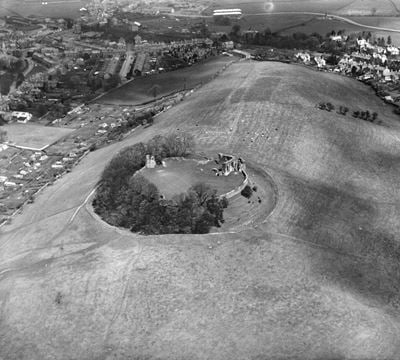
Kendal
Kendal Castle, Kendal, 1929
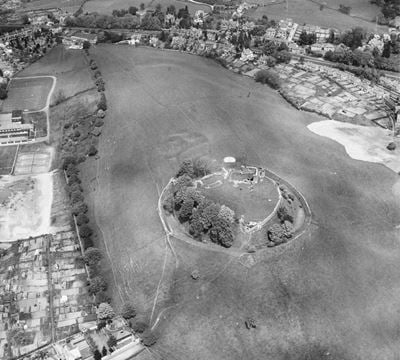
Kendal
Kendal Castle, Kendal, 1952
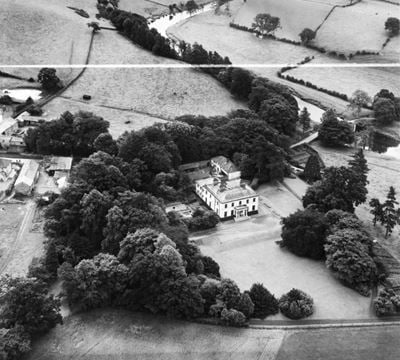
Warcop
Eden Gate, Warcop, 1951

Warcop
Eden Gate, Warcop, 1951

Kendal
The Market Place and environs, Kendal, 1929
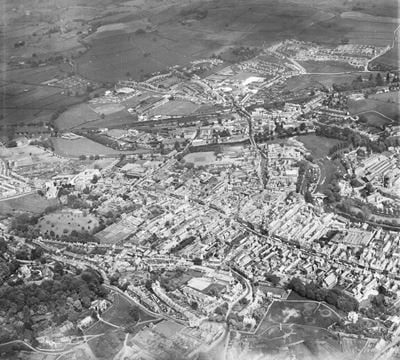
Kendal
The town, Kendal, 1952

Kendal
The junction of Finkle Street and Strickland Gate, Kendal, 1929

Kendal
The town, Kendal, 1952
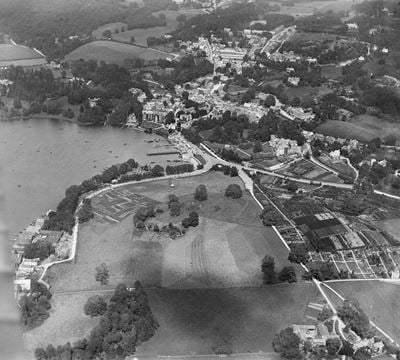
Bowness On Windermere
Bowness Bay, Bowness on Windermere, 1920

Bowness-On-Windermere
Old England Hotel and environs, Bowness-On-Windermere, 1949
Westmorland in the Historic England Archive
The Historic England Archive cares for over 15 million images, dating from the 1850s to the present day. Discover stunning images of Westmorland's past. Skip this section and go to stories about heritage
Charles George Harper Collection
South Lakeland, Cumbria
Date created: 1892 - 1933
A view from the south-east showing the front elevation of the Castle Diary
Eileen ‘Dusty’ Deste Collection
Abbot Hall Park, South Lakeland, Cumbria
Date created: 1965 - 1968
The stable block and carriage entrance (now the Museum of Lakeland Life and Industry) viewed from Abbot Hall
Eric de Mare
Ambleside, South Lakeland, Cumbria
Date created: 1945 - 1980
General view of stepping stones in Ambleside.
John Gay Collection: Rural Life
South Lakeland, Cumbria
Date created: 22 DEC 1953 - 07 JAN 1954
An interior view of a stone barn at Middle Fell Farm, showing a farmer carrying buckets through the doorway and a cow waiting to be milked.
John Gay Collection: Miscellaneous
South Lakeland, Cumbria
Date created: 1958
Oligoporus caesius funghi growing on the cut end of a large felled tree trunk, photographed near Rydal Water or Grasmere in the Lakes parish of South...
John Gay Collection: Counties
South Lakeland, Cumbria
Date created: 22 DEC 1953 - 07 JAN 1954
Middlefell Place Farmhouse in Great Langdale with the stone shippons to house the animals continuing under the same roof
John Laing Collection
Lowgill, South Lakeland, Cumbria
Date created: 28 Mar 1968
A lorry collecting concrete at a batching plant during the construction of the M6 through the Lune Gorge
London, Midland and Scottish Railway Company
South Lakeland, Cumbria
Date created: 27 Apr 1886
A view from the south-west showing the Old England Hotel on the shores of Lake Windermere, with two wooden landing stages extending into the water in...
Nigel Temple Collection of Postcards of Parks and Gardens
Eden, Cumbria
Date created: 1900 - 1920
EXTERIOR FRONT ELEVATION
Walter Scott
South Lakeland, Cumbria
Date created: 1946
A view looking across the sands at Arnside towards the railway viaduct, from the south-east
John Laing Collection
South Lakeland, Cumbria
Date created: 27 Feb 1970
A view of the construction of the M6 Motorway through the Lune Gorge, looking north along a stepped part of the motorway towards Low Borrowbridge
Stories about heritage in your local area
Historic England publishes news, blogs, research, videos, and podcasts celebrating England's rich heritage. Discover the stories we have about Westmorland. Skip this section and go to education
The History of England’s Village Greens
Mentions Pump Near East End
The origins of village greens in England date back to the early Middle Ages. Village greens are open spaces that can be registered.
16 Historic Gardens and Landscapes to Visit
Mentions Levens Hall
Try these English gardens if you’re looking for somewhere with spectacular garden scenery.
Narrative Structures: England’s Literary History in 11 Places
Mentions Dove Cottage at Town End
Discover the historic sites in England where famous writers found their inspiration.
Women Architects Who Helped Shape England
Mentions Church of St Michael
Women have always influenced domestic design but it wasn’t until 1898 that the first female architect was admitted to the Royal Institute of British...
9 Stunning Country Houses You Need to Visit
Mentions Levens Hall
Here are nine of our favourite country houses and gardens from around the country.
William Wordsworth and the History of the Daffodil
Mentions Dove Cottage at Town End
In honour of William Wordworth, we contemplate daffodils and their place in our culture.
7 Things You May Not Know About Listing
Mentions High Street, Roman road
The List (of England's heritage assets) is full of wonderful examples of our creativity, innovation and humour.
Historic Places Panel’s Recommendations For Barrow Welcomed
Mentions Westmorland
Team Barrow has welcomed the recommendations of the Historic Places Panel to guide the £200 million transformation of Barrow.
Heritage Could Help Add £2.7 Billion to Northern Economy
Mentions Moot Hall
Heritage working together with the arts, culture, nature and environment sectors could help tackle the cost-of-living crisis and regenerate the North.
Pilot Scheme Success in Restoring Historic Barns
Mentions Barn to South East of Bridge End Farmhouse
Bringing life back to traditional agricultural buildings within the participating National Park boundaries.
Remembering Passchendaele: War Memorials Listed
Mentions Westmorland
Battle of Passchendaele centenary marked with 13 new and upgraded war memorial listings
Groundbreaking Women of Science Celebrated
Mentions Rydal Cottages
Historic England and The Royal Society celebrate International Women’s Day by bringing to light the exceptional achievements of female scientists
Westmorland's social history through photos
Over 10,000 images from the Historic England Archive have been specially selected and re-captioned for teachers, students, and anyone who wants to learn more about their local area. Skip this section and go to grant-aided places
Yanwath Hall Cumbria
Period: Medieval (Middle Ages) (1066 - 1484)
This hall house has one big room with a parlour at one end which was used by the lord and his family.The large windows that let light into the parlour...
Workmen from John Laing plc sitting on a stone wall in Eden, Cumbria
Period: 1960s (1960 - 1969)
These workmen were building part of the M6 Motorway between Killington and Tebay, in Cumbria.
Workmen from John Laing plc sitting on a stone wall in Eden, Cumbria
Toll House, Casterton, Cumbria
Period: Georgian (1714 - 1836)
This former toll house dates from the mid to late 18th century.
Toll House, Casterton, Cumbria
St Anne's Hospital, Boroughgate, Appleby, Cumbria
Period: Stuart (1603 - 1713)
These almshouses were built round four sides of a cobbled courtyard. Number 6 has been demolished.
St Anne's Hospital, Boroughgate, Appleby, Cumbria
Snuff Works, Lowther Street, Kendal, Cumbria
Period: Georgian (1714 - 1836)
This factory has been producing snuff since 1782. Taking snuff was very fashionable in Georgian England.
Snuff Works, Lowther Street, Kendal, Cumbria
Police Station, The Sands, Appleby in Westmorland, Cumbria
Period: Georgian (1714 - 1836)
This building was constructed as a prison in 1770.
Police Station, The Sands, Appleby in Westmorland, Cumbria
Tags
Old Mill, North Road, Ambleside, Lakes, Cumbria
Period: Georgian (1714 - 1836)
Water flowing along the leat onto the overshot wheel produces power for this 18th-century mill.
Old Mill, North Road, Ambleside, Lakes, Cumbria
Maypole on Village Green, Warcop, Cumbria
Period: Medieval (Middle Ages) (1066 - 1484)
This maypole stands on what was originally the base of a medieval cross. The tall wooden pole has a decorative 20th century weathervane on top.
Maypole on Village Green, Warcop, Cumbria
Visit grant-aided places near you
These places and buildings have been helped by Historic England's financial grants. Find local heritage in your neighbourhood that you never knew existed! Please note that opening times may vary. Skip this section and go to related locations
Lowther Castle, Penrith, Cumbria
Lowther Castle was constructed between 1806-1814 by Sir Robert Smirke for the 1st Earl of Lonsdale.
The Moot Hall, Boroughgate, Appleby in Westmorland, Cumbria
This Grade II*-listed moot hall is thought to be one of the earliest purpose-built moot halls in England.
Discover more
Ready for more local stories? Take a look at these other places nearby

Westmorland and Furness
Local Authority District

Cumbria
Ceremonial County

Lake District
National Park